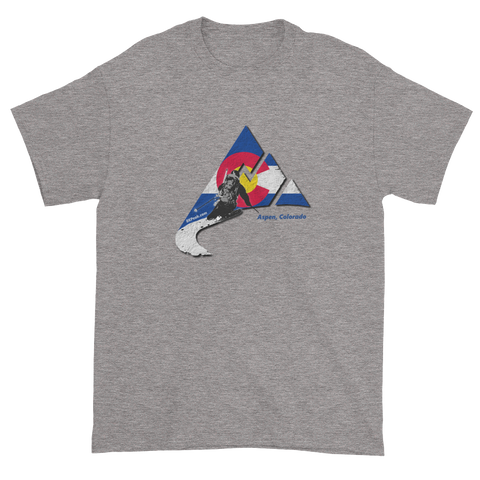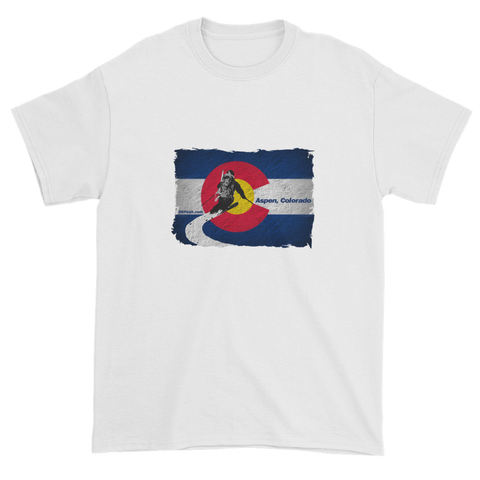Can the use of supplemental oxygen make the 29,035 foot summit of Mount Everest feel like 19,000 feet or lower? Being a math geek, I did some research, created a model in Excel, ran the numbers, and the results were amazing.
 Photo by naturalvitalitysports.com
Photo by naturalvitalitysports.com
Some people state that climbing with oxygen is cheating. The intention of this post isn't to stir the pot of the O's vs. no O's controversy, it is to examine the effects of using O's strictly by the numbers. I don't take anything away from anyone who has ever endured months of expedition life, managed to set foot on the summit of Everest, and lived to tell about it. It all comes down to how you choose to experience the mountain.
When we were at advanced base camp on the North side of Everest in 2007 we started talking to a woman in her 50's who had just come down from topping out. I asked her what it felt like sleeping at 27,000 feet and she said "I slept like a baby". We have never used oxygen on any of our climbs so her response was completely unfathomable and has stuck with me ever since. It really made me wonder, can using oxygen truly have that big of an effect? My research started with the book, Going Higher: Oxygen, Man, and Mountains by Dr. Charles Houston, which I highly recommend.
Supplemental oxygen benefits climbers in two different ways. First, it decreases the altitude that you feel. Second, it helps keep you warm by allowing the blood to flow more freely to the extremities. For the sake of brevity, we will only explore the decrease in physiological altitude in this post.
Decrease in Physiological or Perceived Altitude Due to Supplemental Oxygen:
First off, air does not equal oxygen; air throughout the lower atmosphere is comprised of only 21% oxygen. Therefore, using supplemental oxygen increases the percentage of oxygen (O2) in the air that you breathe. So how does that help climbers at high altitudes? In a previous post we saw how air pressure decreases with altitude and also how that pressure varies with latitude, temperature, and weather. We can't do anything to increase the low ambient air pressure at higher altitudes but we can, using supplemental oxygen, increase the O2 partial pressure of that air, which is equivalent to a decrease in altitude. The body's respiratory system depends on the partial pressure of oxygen within the air that we breathe because the higher O2 partial pressure makes it easier for oxygen to be "pushed" from the lungs into the blood stream and ultimately be used by the muscles to do work. For example, the standard atmospheric air pressure at sea level is 760 torr and since oxygen makes up 21% of that air, the O2 partial pressure is 760x.21=160 torr. So, if breathing supplemental oxygen increases the O2 percentage from 21% to 50%, then the O2 partial pressure would increase from 160 torr to 760x.5=380 torr. That is why you see people benefiting from the use of supplemental oxygen, delivered via simple nasal prongs, even at sea level.

Other key factors in the effectiveness of using O's are the per minute respiratory volume (RV) and the flow rate (FR) of the supplemental oxygen, both of which are generally measured in liters per minute. Respiratory volume or minute volume is simply the number of breaths per minute times the tidal volume of each breath. At lower altitudes, the normal, healthy adult resting minute volume is 12 breaths/min times 500 mL for a total of 6 liters/min, while 50 liters/min is considered light work, 100 liters/min is hard work, and around 180 liters/min is maximum effort. At higher altitudes, as anyone who has ever been above 18,000 feet can attest, the maximum effort decreases to around 50 liters/min.
The flow rate of supplemental oxygen is the amount of pure oxygen that is available to breathe at any given time. So the flow rate (FR) combined with the respiratory volume (RV) determine the percentage of oxygen in the inspired air. The formula for O's delivered via simple nose prongs where the oxygen mixes with the ambient air during every breath is [(FR x 100%O2) + ((RV-FR) x 21%O2)]/RV. So with a flow rate (FR) of 4 L/min and a respiratory volume (RV) of 10 L/min the average O2% of the inspired air would be [(4 x 1) + ((10 - 4) x .21)]/10 = 0.526 or 52.6%.
People who climb with supplemental oxygen don't use simple nasal prongs because (although they are convenient at low altitude allowing one to eat and talk without taking them off) they are inefficient at high altitudes. Instead, climbers use some type of rebreather mask which stores oxygen from the tank in a small reservoir so that more pure oxygen and less ambient air is used in each breath. There are many different types of climbing masks in use today (see Alan Arnette's post if you are interested) but for the purposes of this post we are concerned more with what they do as opposed to how they do it. The bottom line is that climbing masks increase the oxygen percentage of inspired air over and above the values calculated above for simple nasal prongs. I did not dig in to the details of that increase but instead came up with a simple mask efficiency factor of 15% which seems to correlate well with the Topout Mask clinical reports.

Now that we have covered all of the background information, we can use this data to model how the use of O's affects the perceived altitude for various respiratory volumes (RV) and flow rates (FR). The model involves calculating the standard O2 partial pressure of ambient air at various altitudes and comparing that to the calculated O2 partial pressure while using supplemental oxygen at those same altitudes for various RV and FR values. I used normal climbing flow rates which range from 1 to 4 liters/min and chose high altitude respiratory volumes of 50, 30 and 10 liters/min to represent hard climbing, efficient climbing, and sleeping respectively.
Finally the numbers:

Respiratory volume of 50 L/min which represents hard climbing at altitude. With a flow rate of 4 L/min, the summit of Everest feels like 19,700 feet.

Respiratory volume of 30 L/min which represents efficient climbing at altitude. With a flow rate of 4 L/min, the summit of Everest feels like 16,250 feet.

Respiratory volume of 10 L/min which represents sleeping at altitude. With a flow rate of 2 L/min, sleeping at 27,000 feet feels like sleeping at 10,000 feet.
As you can see from the graphs above, the results are astounding especially for the 2 lower respiratory volumes of 30 and 10 L/min. It is easy to see why that lady on Everest was able to "sleep like a baby" at 27,000 feet. If she was on a flow rate of 2 L/min she was effectively sleeping at 10,000 feet, a full 17,000 feet lower than the physical altitude!
If you are interested, you can download the Excel spreadsheet here and try some of your own RV and FR values.
- Jim Gile
Note: During my research I found a National Geographic blog post that contained a blurb by the great American alpinist and doctor Tom Hornbein who did some similar calculations in 2012.



Jeff Rogers
WOW! I thought Os dropped you about 9000ft max! Had no idea it depended upon the amount of exertion. Mike is right, instantly ascending 17000ft (after your Os run out or malfunction) during your sleep could kill someone quick. Combine that with the people who now have to try and rescue you because you have been relying on Os the whole time, and you have a huge mess. Great read.
Charles Hopton
I agree with Mike Marolt. It is using a crutch. If the crutch breaks, you are in trouble. it is not a question of “climbing pure”, it is a question of acclimating properly.
That said, it is also a question of did you summit? Or was it the oxygen, Sherpa’s, etc that carried you there?
Alan Arnette
Once again, a nice article. How did you factor in leakage around the mask? I know from personal experience, there is a great deal depending on brand, fit, facial hair, goggles, etc. Thanks for the link to my article, by the way.
mike marolt
Can you imagine sleeping at 27,000 feet where the altitude is effectively 10,000 feet and having your oxygen malfunction? If you were not acclimated because you used O’s to get there in the first place, you could easily die. Good article Gile.